
Chris McKay is a director that’s well-loved here at JoBlo. While we loved his work on Robot Chicken at the Lego Batman Movie, many of us here at the site we major fans of The Tomorrow War, Prime Video’s big-budget Chris Pratt sci-fi epic that surprised a lot of us when it came out in the summer of 2021. Now, McKay is back with another ambitious live-action flick, Universal’s Renfield, which re-imagines the Dracula mythos through the eyes of his hapless manservant, played by Nicholas Hoult. And, with Nicolas Cage himself playing the Prince of Darkness, you can bet this will be a blast of fun.
Recently, we were invited to the set of Renfield. You can read our report here, as well as our interviews with Hoult and Cage, and now, here’s our 1:1 sit-down with director Chris McKay!
One thing I was curious about, and I’ve spoken with a couple of your cast about this, having worked on some various animated films prior to the live action ones you’ve done, how does that help you in creating a world that’s outside of reality? The description I was given was it helps imagination in terms of acting, for sure. But as a director and creator, how does it help you visualize things?
Yeah, because in animation, you have to build everything from the ground up, right? Whether it’s doing stop motion like I used to do, or doing stuff in CG, every leaf that blows by, every movement of water, and every other thing, everything you want in the frame that you’re going to give some life to. And you got to sort of think about how that contributes to the feeling and all this stuff. So it’s a great exercise in tone. It’s a great exercise in storytelling. It’s storytelling in slow motion, so you really get to see how the pieces of your character, your story, it all comes together, and it forces you to really kind of, like, pay hyper attention to it. And because of the slow motion, I think you’ll learn a lot. I think every filmmaker should make an animated movie or an animated short because you really learn a lot about storytelling in a way that because you don’t because you aren’t in control when you’re running on location, shooting something, you’re at the whim of a lot of things, the weather and a number of things. In animation you’re a better way of putting it, you’re a god and you can make the world anything you want within reason.
And you still have to collaborate with your production designer and your character designers and your animators and everybody else to lay out people. But you kind of are in control of everything. So it does kind of force you to look at things a little bit differently. So for me, when I go to make a movie like this because this movie, it’s a comedy, it’s an action movie. It’s got supernatural elements, suspense elements, some drama. You have to navigate tone and be able to sort of sometimes, like Pixar is a really great example where you can laugh. The hardest you’ve ever laughed is maybe a Pixar movie, and the hardest you ever cried is in a Pixar movie. And so they’re incredibly deft at navigating tone. And that takes a lot of beating up the movie, beating up your reels as you’re putting them together and sometimes throwing things out and that sort of thing. I think maybe also you learn not to be so precious about stuff. Maybe in animation, I think that you learn a little bit to kind of go, okay, you know what? That was an idea. We tried that. We learned something from it, and now we’re going to take that learning and then try to force ourselves to be better, force ourselves to reach higher.
I would hazard to say, too, that with animation and again, like I pointed out, you have a number of people in your cast who have had experience with doing animated films. It also helps in directing them in terms of seeing things that aren’t there and putting them into the moment, like making them use this. Now you’ve got a giant dragon that’s going to eat your head if you don’t move this way. And what’s your reaction to that kind of a thing?
Yeah, absolutely. I mean, if Nick Cage is going to turn into a bunch of bats and fly out of a room, you need everyone to sort of visualize where the bats are going to go and how to duck and where to run and being playful, it brings you back to being a kid. That’s the thing working on animated movies, when you’re working with actors, you have to it’s like when you’re in the playground and you’re in your backyard and you got, you know, I don’t have a sword, but I’m going to pretend to have a sword. I’m going to pretend that thing, that bush is a monster, and then we’re going to go attack that thing and sneak up on it. And you’re building this story. So you’re just trying to create an environment with words and images that you can put into people’s minds, associations and that sort of thing smells all of that stuff. You access all of your resources. There’s a scene where some characters go into Dracula’s lair. There weren’t flies there and it didn’t smell terrible. But you do want to create this sense that it’s cold and it smells bad and there’s bugs and things all over the place.
And a lot of that stuff gets added later. Like I said, Dracula turns into bats, rooms on fire when we’re just got lighting gags doing the fire and stuff like that. But yeah, that’s a lot of what you do. A lot of what I did with actors when I was doing The Lego Movie, when I was doing Lego, Batman and things like that, that you just have to you literally have to create everything. It’s like black box theater. You go back to the basics of acting and directing, where it’s just you and an actor in a blank stage and you build the world around it. So then you can kind of extrapolate that out into how we sort of create the sense of dread or the sense of fun that we’re going to build out into a scene.
So one thing kind of leading into this was, I wanted to ask you and I just rewatched Warm Bodies, because it just came out on a really great bluray. And I wanted to ask you about old school Hollywood facial acting, because Nick Hoult had barely any dialogue in that movie, and when he did, it was grunts for the most part. But he has a face that was made for silent film. Nicolas Cage also has the ability of using his face to convey emotion and range and just with his eyes and a look. And I was wanting to ask you about utilizing that in this movie, because you’ve definitely got Nick Hoult looking like an old school, like he walked out of a 1931 Dracula movie in this, with how he looks, his coloring and all of that. Can you talk about using faces that are that expressive and how you as a director, get them to convey.
Just an incredibly astute observation on your part. That’s one of the reasons why I like Nick Hoult, one of the reasons why I immediately saw, I think, the last time we talked we were talking about him, like being unafraid to be weird or afraid to try things and stuff like that. And I think that’s a big part of what he is good at. What you’ve observed and pointed out is that part of what he’s unafraid to do is also kind of use his sort of rubber face, for lack of putting it, and really express what’s going on inside in very simple, but sometimes very big facial expressions and takes. He’s unafraid to do big takes to the camera, very comic takes and that sort of thing. He really enjoys doing that. And especially in the beginning of the movie, there’s a lot of that thing because he’s sort of a passive character in the beginning of the movie. And so you get to see him kind of as he’s reacting to things around him, reacting to Dracula, reacting to the Codependent Anonymous meeting, stuff like that. He is incredibly good at that, and also because he’s a very tall guy, 6’2, and he works out, and so he’s very in touch with his body is probably the best way I can describe it.
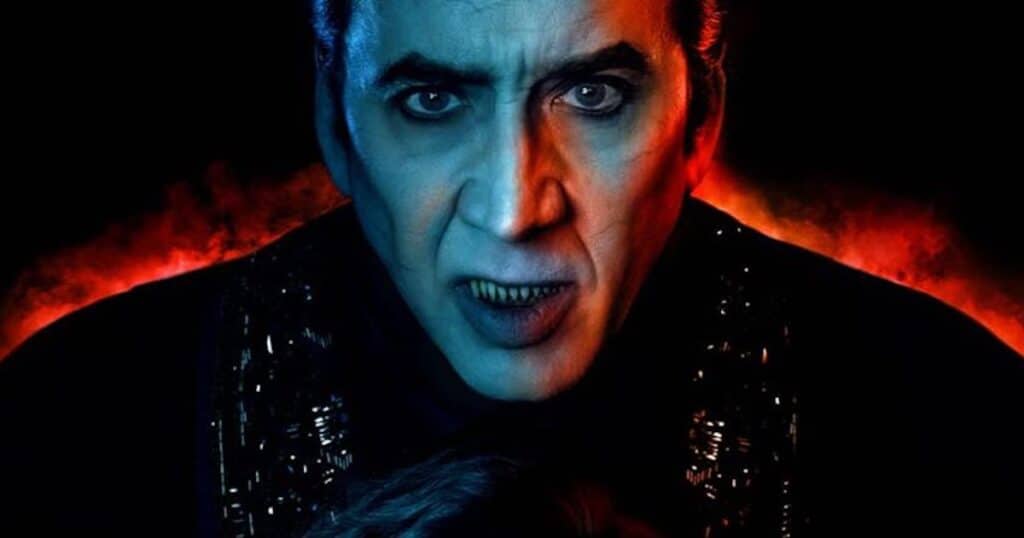
And the same way I’ll describe Cage as well. They’re both very in touch with their bodies, their faces, their arms, their legs. Cage makes shapes with his body. Nick makes sort of shapes with his body to suggest he’s vulnerable or that he’s scared or something like that. And I would also put Awkwafina in this category, too. She is a cartoon character. The way that she stands and poses and throws her arms. I don’t even think we had enough for her to do in that realm. But every time she did it in this movie, it was always something I really love because she is also I keep thinking like she would be great in a movie like Kung Fu Hustle where she’s just so incredibly expressive and unafraid to be kind of cartoony. Cage is unafraid to do this. He loves silent movie acting. We talked a lot about Count Orlock and Nosferatu and all of Cabinet of Dr. Caligari and The Man Who Laughed and all this other stuff. And also people like Ann Bancroft. We were talking about The Graduate and talking about feelings of betrayal and stuff like that. And you can watch if you watch some of his stuff he’s doing he’s sort of channeling all of these things in the movie and where he’s prideful even though he’s in the scene, he’s sort of injured.
You can sort of see that he’s filled with pride and ego and vanity and all that kind of thing. Initially, in the beginning of the movie when we first did the table read I was sort of just talking to the actors, just generally everybody in the room. And I brought up a picture of one of the actors from the Powell and Pressburger movie, The Red Shoes, and it’s this very garishly lit…I can’t remember what production they were doing in the movie, but it was one of the actors and they were just lit with this red light and their face was filled with some kind of ecstasy. And I was like, be unafraid to be that big, that bold, that expressive with your face, with your body. Be unafraid to just try stuff. What I don’t like is when people edit themselves, they start to say a line and then they think that they fucked up and then they stopped. More often than not, they’re actually hit on something but they’re just kind of they themselves are surprised by it. And it’s something that’s real and it’s something that is coming out of them because they’re kind of getting worn we’ve done a couple of takes.
They’re kind of getting worn down and they’re just sort of going on instincts suddenly as opposed to having some sort of thing that they brought to the table. They’re actually kind of just flowing and that’s really exciting. And I try to get people like, look, just fuck it’s, okay? We got plenty of takes. We’re not even fucking shooting on film anymore. It’s like, we’ve got a hard drive that can just take 90 minutes. We can have a 90 minutes take if we wanted to just keep the camera going, you know?
We’ve got three gigs left to film!
Exactly, yeah, we’ve got three gigs left of hard drive space. Keep acting. But but that’s but it’s like it’s like, you know, yeah, we just have ten minutes. You know, you could get it. You got ten minutes. And they got changed to change the reel mag. Now it doesn’t matter. I like to keep people kind of like and I want people to have fun. I think there’s a joy that if people are just having a good time, they get to try things, because I like to take long takes. I try to set up camera moves that I can cut in and out of and not necessarily all meant to be as one, or I like to just let the actors kind of play and let the scene play out and kind of let the cameramen sort of follow along. And there’s definitely times where the camera gets compromised. And so now the camera guys got to kind of move around and switch to something to catch back up with. Where the actors at? But I like letting the actors kind of treat it like it’s like it’s a theater performance, and so that they can kind of just inhabit a moment.
And so I’m not just, like, do that line again. Do that line again. None of that thing is just, like, let it grow out of the interaction with the other actors in the environment and what’s going on, and just kind of gets people into a place where it feels even to touch more real, touch more organic. It feels people can be a little more thoughtful. They can kind of grow into something. And for me, that’s more fun. And I think that kind of the joy of that kind of performance, I think also gets people, the DNA gets baked into the movie. And I think that’s what I think audiences can feel, that. It also helps people who maybe don’t act as much, that they get a chance to kind of, like, kind of be in something and not just sort of be kind of, okay, I got to come in and save this line and go. They get to be part of a scene and part of a performance, and everyone’s kind of contributing, and I guess that’s just really important to me, that feeling. That’s the thing I try to capture. It’s hard to do.
It’s hard to do when you’re on a budget and got a schedule, and not everyone understands that. Not every DP and camera operator understand that, but I think it actually with the right DP and the right camera operator, it actually makes them a crucial part of the scene. It makes them another actor in the scene.
I wanted to ask you about this because I got to watch it happen. And it was fascinating to see was during these scenes and this feeds into what you were saying about getting yourself into that place. It was during the fight scene with the vampire hunters and Dracula’s lair. And I got to see, first of all, Nick Hoult running through fire was insane. But seeing Nicolas Cage in full on Dracula regalia, like, bending up and down and getting flexible and getting ready to do a fight scene himself and psyching himself up, can you talk about that and how he got into that character in those scenes? What was your direction for him in order to do that? What was the conversation like?
Yeah, it’s funny. I don’t know if you remember it’s on The Shining bluray.
Oh, Jack Nicholson getting ready.
Yeah. Getting ready with the axe and stuff like that. That’s was very inspirational. I literally showed that to the animators on The Lego Movie. I was like, I want you to think about like when you’re animating a scene, I want you to think about I want you to psych yourself into what you’re doing for your performances. I really want you to look at how an actor prepares for a scene. And even that stuff where he’s brushing his teeth and he’s talking about it’s. Like, look at the way observe this detail of a guy getting ready for all the things he’s doing to get ready for on set and stuff like that. But, yeah, look, I wanted this to feel like the third act of someone else’s Dracula movie, where it felt like this is the culmination of some other movie where Dracula gets beaten and then he has to kind of be resurrected for the next film. The beginning of our first act is someone else’s third act. And so I wanted it to feel big, and I wanted it to feel at least have some action set pieces and the feeling of that kind of thing.
But I knew that at the center of this was our moral dilemma, was Renfield once again, even though he’s been given a chance to leave, given a chance to go, still stuck in this relationship. It’s like we’ve all had bad girlfriends, bad boyfriends, bad bosses, stuff like that, where it’s just like, why can’t I get out of this thing? Bad parents. Why can’t I get out of this cycle that I’m in with this person? We probably talked a little bit about that stuff and that feeling, but also, I just wanted, like, Dracula to me, Dracula is rock and roll. That’s the thing I wanted out of Cage. I wanted to be like, he’s the lead singer of a band and he’s preening and he’s moody and he is vain. But he’s also like a gas lighting manipulator and he can charm the shit out of anybody and also create a bond, look you directly in the eye and tell you how much he cares about you and how much he loves you and how much you mean to him and all that kind of thing. So I wanted to see, what is the rock god? The Dracula is a rock god version at the beginning of our movie.

And so I had him run up the wall and had him turn into bats and had him fly around and kick people and throw people and face off with a priest and become an animal himself, like, just when the cross comes out and he becomes an animal. And then Renfield’s just this puppy dog trying to run to catch up with his master and to try to please him and take care of him. But again, he’s given this moment of this choice by the priest saying, hey, help us, we can destroy Dracula and you can be free. And Renfield’s not ready to be free, and Dracula manipulates him and Dracula charms him. And one of those sort of unconventional things, I have them both look directly into the camera. Not that unconventional people do it, but I think sometimes getting everybody on the crew to sort of understand, like, hey, this is important. They should be looking right at each other and right at the audience. It’s not an over the shoulder. It’s not something it’s slightly untraditional, slightly uncomfortable to be able to look, to have Cage look down the barrel of the lens, look right at Renfield, look right at the audience, look right into his soul and say these things, say these things that are manipulative and say, you’re my friend.
You mean so much to me, and have Nick wilt his resolve. Maybe he was thinking about when the priest says, hey, you can be free. Maybe he’s thinking about it for a second, but then what Dracula, when Dracula says these words and charms him and kind of hypnotizes him maybe a little bit the way that vampires do, then Renfield’s resolve wilts and he starts the cycle all over again. So there’s some comedy in that, there’s some tragedy in that, and there’s some really great performances.
And that reminds me, like, very much of old school twenties and thirties old school silent films because that’s how they would look directly in the camera. That’s fantastic. I’m so excited.
I wanted to ask about the music in the film. And really, what would you, as a fan and also a director of the film, what would you pick for Dracula’s theme song? And what would you pick for Renfield’s theme song? If you had a song for the character that you could have.
Well, I’m going to cheat a little bit on the Renfield one because we put a Lizzo song in a montage for Renfield. And so I would say the Renfield song would be the Lizzo song that we’re putting in the movie or something like Diana Ross I’m Coming Out or something like that, where he’s getting a new lease on life kind of thing. So that would be his.
Dracula’s theme song. That’s such a fucking good idea. The one thing that comes to mind, honestly, is the score. The sort of Dracula theme for the Coppola’s Dracula. Oh, man, it’s so good. I forgot how fucking good it is. When we did our camera test. So we had our camera test over a couple of days, right? We had to do makeup, we had to do costumes. We do a bunch of different things. And I sort of insisted this is also very unconventional, but I sort of insisted that we usually put it in front of a black background so that the studio can just sort of sit there and judge it, whatever, and that sort of thing. But I was like, no, I want to put it on a set.
I want smoke, I want colored lights, I want candles. I want everything. And Alec, the production designer, who’s amazing, fucking amazing. Great guy, great human being, super motherfucking, talented and just game to do anything. He’s like, yeah, cool. I’ll put up a couple of walls. We’ll do this, we’ll do that. We’ll take some stuff from set dressing. We’ll put it there. And they put this little set together with pieces of stuff that ended up in, you know, Dracula’s lair and some other things. And so we shot all the actors in front of this set. They were able to interact with it. Go sit down, stand up, walk around. And I played for Cage, especially in Cage and Renfield Nick Hoult. I played the Coppola Dracula theme. And it’s just like yeah, exactly. It’s so good. And you play that, and this is like all sudden. Everybody’s just everyone just understood immediately, like, what was going on. And also the contrast, contrast comedy, like how funny this could also be. Because it’s Cage in this world. He can definitely play the straight side, the dramatic side of Dracula, but he can also play what is humorous about this relationship and talk about silent movie acting.
They did a lot of sort of very posy, almost like we were doing stills kind of thing. They did sort of relationship posy stuff. Or Cage kept coming up behind Hoult and pretending to want to smell him and want to bite his neck. And then Hoult would sort of be aware that he’s behind him. And then Cage would sort of straighten up. And it was a fun way to get into the movie and a fun way for them to get into the character. But also that music just crystallized everything. I think it crystallized everything for the crew. I think people got the movie a little bit the minute that we put that camera test together, Alec put that stage together and we put that music on and then suddenly it was like everyone realized, oh, shit, this is something kind of interesting and special. And it’s just weird. I think people just sort of got it in that moment with that. That’s sort of what your question reminds me of. How much that theme was important to Cage, Hoult the team. Everybody.
Renfield hits theatres on April 14th!






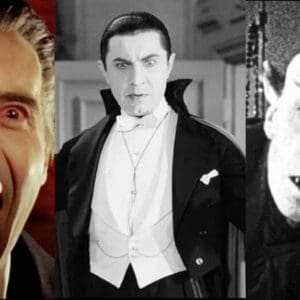
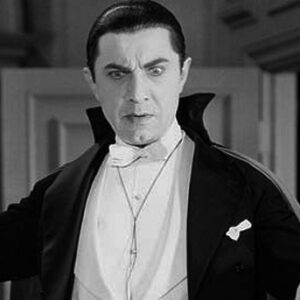
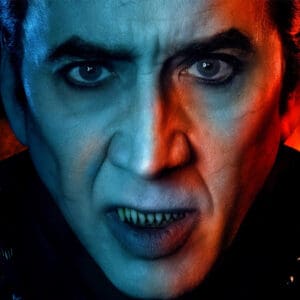
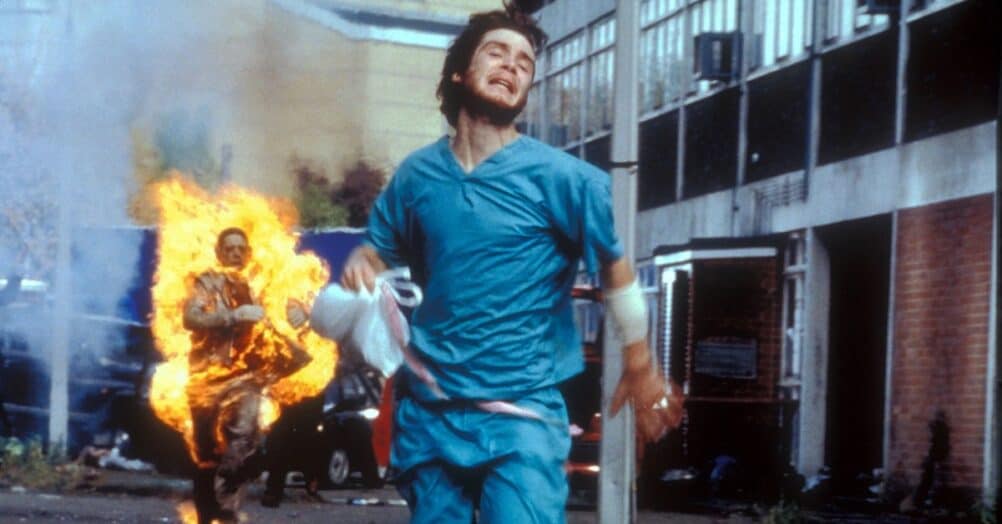





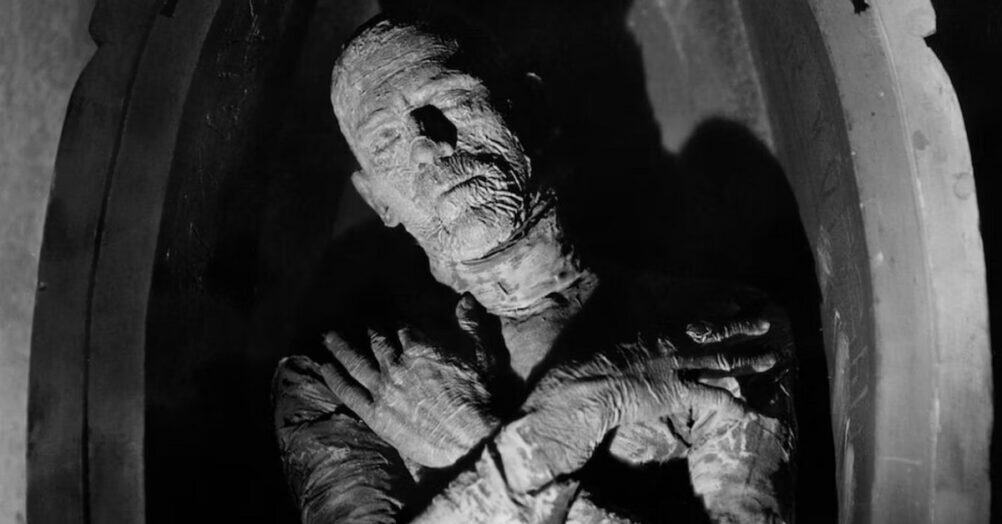
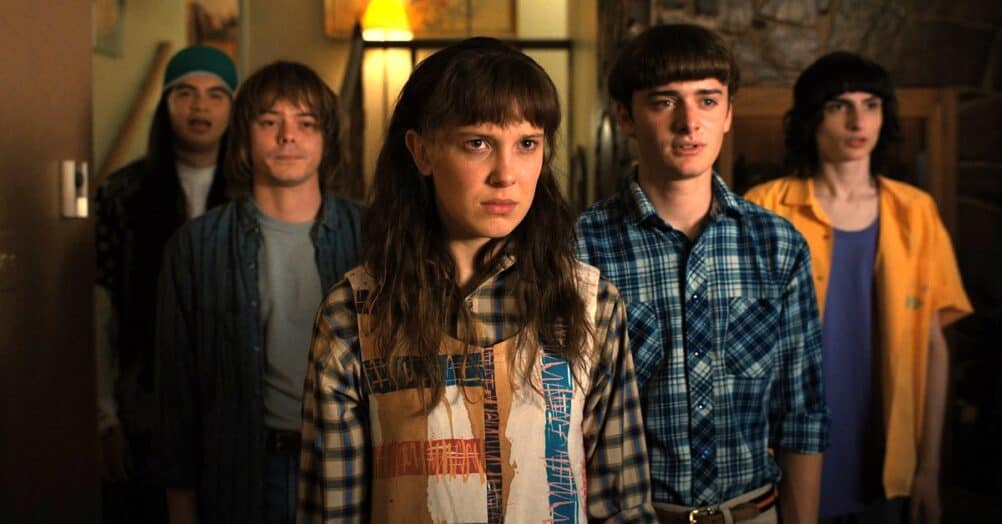

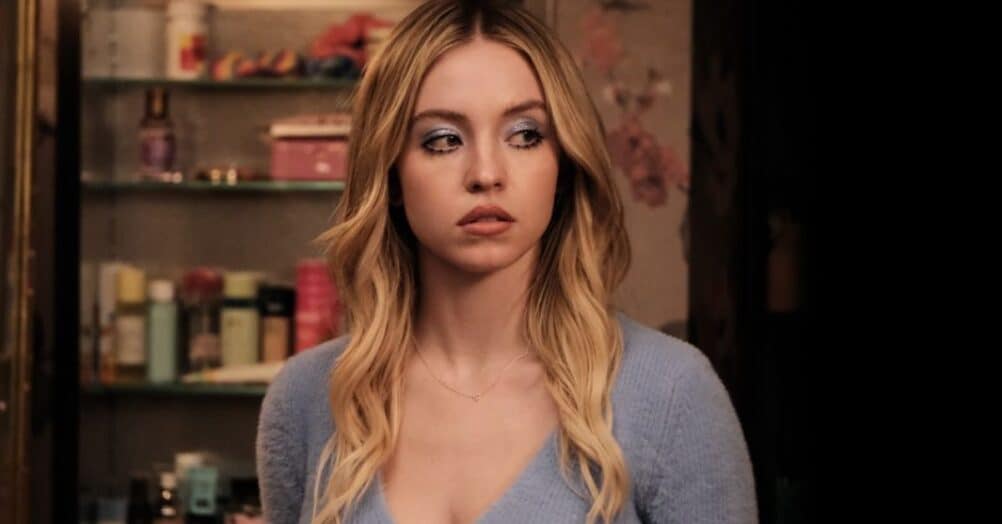
Follow the JOBLO MOVIE NETWORK
Follow us on YOUTUBE
Follow ARROW IN THE HEAD
Follow AITH on YOUTUBE